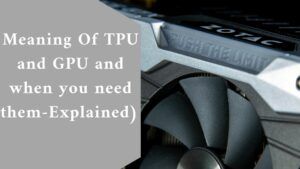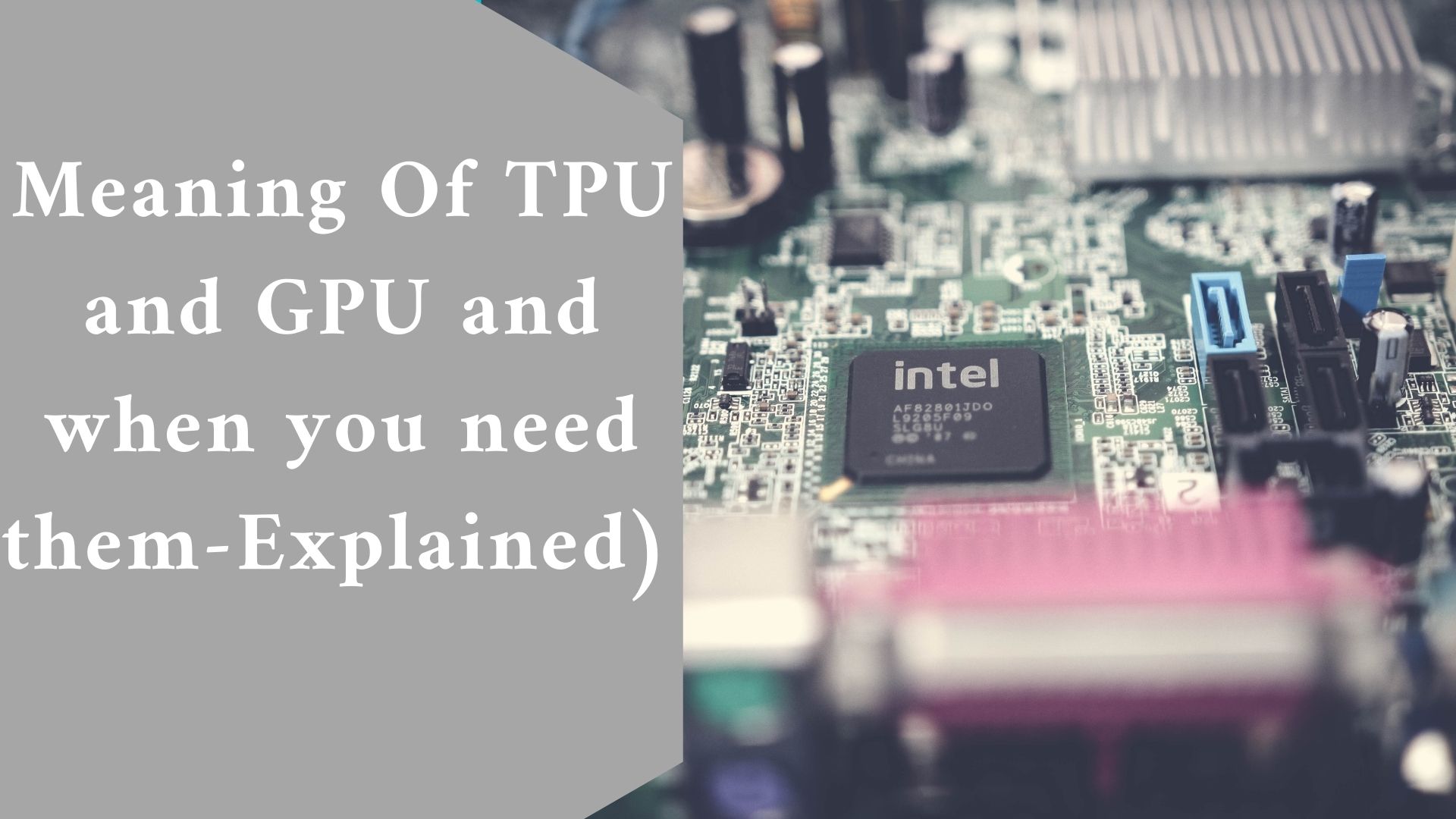If you’re wondering “What Is TPU and GPU?” or you’re asking “Why And When Do We Need Them”? Then read this.
The popularity of artificial intelligence (AI) is growing, and TPUs and GPUs are getting a lot of attention.
Over the past few years, deep learning has achieved many things, like beating poker pros and developing driverless vehicles.
Such tasks require a sophisticated technique, which leads to a complex system. In many instances, the researchers are still using a trial-and-error approach to create specific models.
The desire for stronger and more advanced hardware has increased along with the popularity of deep learning.
Many Tier I businesses, including Intel, Nvidia, and Alibaba, among others, are working hard to close the hardware-software divide. Using higher hardware is the only way to create a complex deep learning model.
TPU and GPU are often contrasted, however, they are two quite different hardware elements.
In this post, we’ll compare TPUs and GPUs by examining their specific functions, advantages, and disadvantages.
The Meaning Of GPU.
The graphics processing unit, or GPU.
Originally intended to accelerate 3D graphics tasks like video rendering, GPUs have since become a very popular choice for use in artificial intelligence (AI).
How the GPUs Function
Parallel processing, or the capacity to complete multiple tasks at once, is how GPUs operate. They are extremely precious because of this as well.
By using GPU parallel computing, complicated issues can be divided into thousands or millions of discrete jobs and solved all at once rather than one at a time as a CPU is required to do.
Pros and Cons of GPU
GPUs are a flexible tool and an excellent option for a variety of tasks including gaming, video editing, and cryptocurrency/blockchain mining due to their capacity for parallel processing.
Additionally, it makes them ideal for artificial intelligence (AI) and machine learning, a type of data analysis that automates the creation of analytical models.
This is because a modern GPU may perform thousands of multiplications and adds at once. After all, they typically have between 2,500 and 5,000 arithmetic logic units (ALUs) in a single processor.
One thing to keep in mind about GPUs is that they are made to accommodate a huge variety of software and applications because they are general-purpose processors.
Therefore, even though a GPU may perform numerous tasks simultaneously, it does so by reading and writing intermediate calculation results to registers or shared memory.
The GPU also uses a lot of energy to access memory due to the massive amounts of concurrent computations that it conducts on its thousands of ALUs, which expands the GPU’s physical footprint.
Although TPUs are rapidly gaining popularity for legitimate reasons, GPUs are still the most often utilized CPU architecture in deep learning.
The meaning of TPU
The tensor processing unit, or TPU, is an architecture specifically designed for deep learning or machine learning applications.
TPUs are application-specific integrated circuits (ASICs) developed by Google with the specific purpose of handling the computing demands of machine learning and accelerating AI computations and algorithms.
Google started utilizing TPUs internally in 2015, then in 2018, they opened them up to the general public.
Google developed a domain-specific architecture when they produced the TPU. This means that Google created a matrix processor that was tailored for neural network workloads rather than building a general-purpose processor like a GPU or CPU.
Google fixed the memory access issue that causes GPUs and CPUs to run slower and consume more processing power by developing the TPU as a matrix processor rather than a general-purpose processor.
How the TPUs Function
Here is how a TPU functions:
- The parameter is loaded by the TPU into the matrix of multipliers and adders from memory.
- The data is loaded from memory via TPU.
- The summing is done concurrently with the multiplications and the results are passed on to the subsequent multipliers as they are completed.
Whatever the total of all the multiplication results between the data and parameters are will be the output from these steps.
Throughout the entire process of these enormous calculations and data transmission, almost no memory access is needed.
Pros and Cons of TPU
TPUs are quite valuable and offer a lot of advantages. They are more expensive than GPUs and CPUs, which is the only real drawback.
The advantages they offer well surpass the exorbitant price they charge.
TPUs are a fantastic option if you wish to:
- Accelerate the use of machine learning
- Quickly expand applications
- Managing machine learning tasks economically
- Commence with optimized, open source reference models.

Meaning Of TPU and GPU and when you need them -Explained)
GPU And TPU
What you need a GPU or TPU to do, as well as the budget you have available for your project, are the deciding factors in the TPU vs. GPU debate.
Both GPUs and TPUs provide a lot in terms of AI, deep learning, and machine learning.
TPUs were created specifically for neural network loads and can operate faster than GPUs while also utilizing fewer resources. GPUs can divide complex issues into dozens or millions of smaller tasks and solve them all at once.
If you’re weighing your options and contrasting one against the other, let us come up with a special solution that is customized to suit your requirements.
Why And When Do We Need TPU or GPU?
For a very long time, GPU has been the industry standard for graphics processing, and it has demonstrated outstanding performance in machine learning.
The largest tech companies in the world continue to employ GPUs, as was said at the beginning of this article.
They can train machine learning models with impressive precision and do billions of calculations in a matter of seconds. GPUs are, however, incredibly expensive.
When it comes to price, TPUs have become a disruptive force. They are far more affordable and simple to access on the cloud. We all understand that one of the main issues with any project is the expense.
TPUs also show enormous increases in performance and speed, making them an obvious choice in the future.
As a result, the odds are in favor of TPUs, therefore you might want to take a closer look at them before starting your next machine learning project.
Related Article:
How To Fix The (Gt 940mx)GPU Lagging in Games (Here is what to do)

